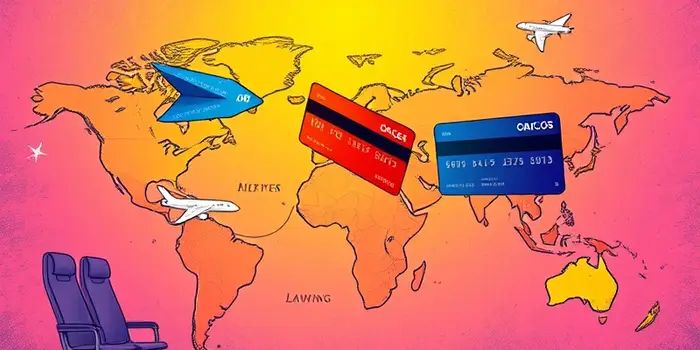
Imagine flying business class to Tokyo or lounging in a private airport suite without paying a dime out of pocket. For many, credit card churning offers a pathway to those experiences. Simultaneously thrilling and complex, churning demands focus and foresight. This article goes beyond the headlines to deliver an in-depth look at the costs and rewards to empower your decision.
Credit card churning has become a buzzword among travelers and finance enthusiasts alike. This strategy involves opening new credit cards to capture lucrative travel rewards and cash bonuses, meeting minimum spend requirements, and then moving on to the next offer. But is the effort and risk truly worthwhile? In this article, we’ll explore the mechanics, benefits, drawbacks, and best practices to help you make an informed decision.
At its core, credit card churning relies on frequent sign-up bonuses that can translate into free flights, hotel stays, or substantial cash back. While the potential gains are enticing, the process demands discipline and a clear plan to avoid pitfalls that could damage your financial health.
Before jumping into the churn, it’s crucial to grasp how the system works. Most cards offer bonuses once you complete a specific meet minimum spending requirements without fail, often requiring $500 to $4,000 in the first few months. After registering purchases on your new card, you’ll earn bonus points or cashback.
Issuers generally publish bonus terms on their websites or in the fine print of marketing materials. They may limit who qualifies based on prior relationships, residency, or the number of cards you already hold. Understanding each card’s unique timeline for application approval, bonus posting, and annual fee cycle is essential.
Once you’ve claimed the bonus, you face a choice: continue using the card for its ongoing perks or close—or downgrade—it before the annual fee kicks in. Responsible churners then move on to the next card, repeating this cycle while tracking individual card rules and issuer limits, often waiting one to two years before seeking the same sign-up offer again.
Research tools and community forums can help you identify the best offers and share real-life experiences, reducing the learning curve and avoiding common mistakes.
When executed correctly, churning offers highest-value welcome bonuses in just weeks. Here are some of the main advantages:
Beyond initial sign-up offers, many premium cards provide access to partnerships with airlines and hotels. You can transfer points to airline and hotel loyalty programs to unlock elite suite upgrades, free redemptions at luxury properties, and status-matching opportunities.
Some travelers report collecting enough points to fund round-trip business class flights to South Africa or multi-city itineraries through alliances like Star Alliance and Oneworld—perks that would otherwise cost thousands of dollars.
No strategy is without drawbacks, and credit card churning carries significant risks if mishandled. Each new card application results in each application creates a hard inquiry on your credit report, often reducing your credit score by five to ten points. Moreover, closing accounts can shorten your average account age, further impacting your credit history.
Additionally, card issuer policies and sudden rewards devaluations can erode anticipated value overnight. Some banks update their anti-churning rules without warning, and certain loyalty programs adjust redemption charts, increasing the cost of awards.
Without meticulous organization and discipline, the overhead of churning can quickly outweigh the benefits, leaving you with a tangled web of accounts and fees instead of travel credit freedom.
Quantifying the impact of churning helps set realistic expectations. Here is a concise overview of typical figures and rules:
Each hard inquiry and account closure reduces your overall credit age, which makes up 15% of your FICO score. By carefully timing applications and closures, you can mitigate these impacts, preserving credit health over the long run.
To maximize rewards while protecting your financial standing, follow these guidelines:
Regularly auditing your credit report can help you spot errors, verify account status, and stay ahead of unexpected policy changes.
Credit card churning is best suited for highly organized, financially disciplined individuals. You should have a strong credit score, reliable income, and predictable spending that naturally meets minimum requirements. Avoid churning if you struggle to pay balances in full, have limited cash flow, or anticipate applying for large loans soon.
For those seeking one-off bonuses without long-term commitment, careful selection of no-annual-fee cards can offer value with minimal downside. Conversely, if you aim for luxury experiences—first class flights, suite upgrades, or exclusive event access—the churning path can be your gateway.
Credit card churning occupies a gray area between savvy reward maximization and reckless credit behavior. When managed with care, it can unlock a world of premium travel experiences and significant cashback. However, it demands consistent vigilance, strong financial discipline, and an understanding of potential pitfalls.
Before embarking on a churning journey, weigh the time investment, credit score implications, and issuer restrictions against the value of the rewards you seek. Craft a plan that aligns with your financial goals, future borrowing needs, and personal capacity for detailed tracking.
Ultimately, credit card churning is not a universal remedy—it’s a specialized strategy that shines in the hands of detail-oriented individuals willing to commit to its demands. Approach it with respect for the risks, and the benefits can be transformative, turning everyday spending into unforgettable adventures.
References













